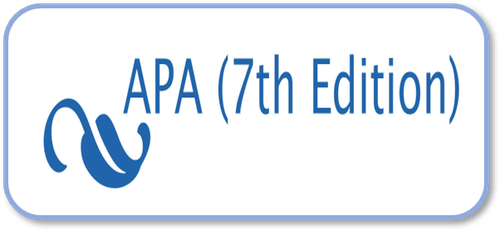The Effect of ODOI On Innovative Work Behavior And Employee Performance
DOI:
https://doi.org/10.24912/jm.v25i2.738Abstract
The research objective is to develop optimal distinctive open innovation (ODOI) concepts, propositions and indicators as well as to test them empirically. ODOI was formed using a synthesis method of two concepts, namely optimal characteristics, derivatives of social identity theory, and open innovation derived from innovation theory. Quantitative empirical testing using SEM on primary data, the PTS lecturers in the LLDIKTI VI Central Java environment were 190 respondents. The test results show that ODOI is able to mediate the effect of innovative work behaviour on improving employee work performance. Innovative work behavior has an effect on increasing ODOI and has an effect on improving employee work performance. ODOI has an effect on improving employee work performance.
References
Afsar, B., Badir, Y., and Khan, M. M. (2015). Person–job fit, person–organization fit and innovative work behavior: The mediating role of innovation trust. The Journal of High Technology Management Research, 26(2), 105-116.
Altındağa, E., and Kösedağı, Y. (2015). The relationship between emotional intelligence of managers, innovative corporate culture and employee performance. Procedia-Social and Behavioral Sciences, 210, 270-2822.
Ardyan, E. (2016). Market sensing capability and SMEs performance: The mediating role of product innovativeness success. DLSU Business and Economics Review, 25(2), 1-18.
Badea, C., Jetten, J., Czukor, G., and Askevis-Leherpeux, F. (2010). The bases of identification: When optimal distinctiveness needs face social identity threat. British journal of Social Psychology, 49(1), 21-41.
Barnett, H., G., (1953). Innovation. Mcgraw-Hill.
Burcharth, A., Knudsen, M. P., and Søndergaard, H. A. (2017). The role of employee autonomy for open innovation performance. Business Process Management Journal, 23(6), 1245-1269.
Burke, PJ., and Stets, JE., (2006). Identity Theory And Social Identity Theory. Washington State University.
Cassiman, B., and Valentini, G. (2016). Open innovation: are inbound and outbound knowledge flows really complementary? Strategic Management Journal, 37(6), 1034-1046.
Chen, X. H., Zhao, K., Liu, X., and Wu, D. D. (2012). Improving employees' job satisfaction and innovation performance using conflict management. International Journal of Conflict Management, 23(2), 151-172.
Chesbrough, H. (2003). Open innovation: Boston: Harvard Business School Press.
Choudhary, N., Naqshbandi, M. M., Philip, P. J., and Kumar, R. (2017). Employee job performance: The interplay of leaders’ emotion management ability and employee perception of job characteristics. Journal of Management Development, 36(8), 1087-1098.
Clegg, C., Unsworth, K., Epitropaki, O., and Parker, G. (2002). Implicating trust in the innovation process. Journal of Occupational and Organizational Psychology, 75(4), 409–422. doi:10.1348/096317902321119574.
Ebrahimi, Z. F., Chong, C. W., and Rad, R. H. (2014). TQM practices and employees’ role stressors. International Journal of Quality dan Reliability Management, 31(2), 166-183.
Ferrari, A., Cachia, R., and Punie, Y. (2009). Innovation and creativity in education and training in the EU member states: Fostering creative learning and supporting innovative teaching. JRC Technical Note, 52374.
Hair, J. F. J., Anderson, R. E., Tatham, R. L., and Black, W. C. 1998. Multivariate Data Analysis, 5th edition, Upper Saddle River: Prentice Hall.
Hogg, M., A., and Vaughan, G., M., (2002). Social Psychology. Prentice Hall.
Iqbal, A., and Asrar-ul-Haq, M. (2018). Establishing relationship between TQM practices and employee performance: The mediating role of change readiness. International Journal of Production Economics, 203, 62-68.
Janssen, O. (2003). Innovative behavior and job involvement at the price of conflict and less satisfactory relations with co-workers. Journal of Organizational and Occupational Psychology, 76: 347–364.
Janssen, O.,Vande Vliert, E., and West, M. (2004).The bright and dark sides of individual and group innovation: A special issue introduction. Journal of Organizational Behavior, 25: 129–145.
Jiménez-Jiménez, D., and Sanz-Valle, R. (2011). Innovation, organizational learning, and performance. Journal of business research, 64(4), 408-417.
Leonardelli, G. J., Pickett, C. L., and Brewer, M. B. (2010). Optimal Distinctiveness Theory: A Framework for Social Identity, Social Cognition, and Intergroup Relations. In M. P. Zanna dan J. M. Olson (Eds.), Advances in Experimental Social Psychology (Vol. 43). San Diego: Academic Press.
Luhgiatno. (2020). Inovasi terbuka dengan kekhasan yang optimal sebagai katalisator peningkatan perilaku kerja inovatif. Salatiga: FEB - UKSW.
Messmann, G., and Mulder, R. H. (2011). Innovative work behaviour in vocational colleges: Understanding how and why innovations are developed. Vocations and Learning, 4(1), 63-84.
Mikhaylov, F., Julia, K., and Eldar, S. (2014). Current tendencies of the development of service of human resources management. Procedia-Social and Behavioral Sciences, 150, 330-335.
Nunnally, Bernstein, I.H. (1994). Psychometric Theory, Edisi ke 3. New York: McGraw Hill.
Pownall, I., Kennedy, V., and Acquaye, D. (2019). Do new first year students seek optimal distinctiveness in a new learning environment? The International Journal of Management Education, 17, 254-266.
Rogers, E., M. (1983). Diffusion of Innovations. London: The Free Press.
Rusu, G., Avasilcăi, S., and Huțu, C.-A. (2016). Organizational context factors influencing employee performance appraisal: A research framework. Procedia-Social and Behavioral Sciences, 221, 57-65.
Sadikoglu, E., and Zehir, C. (2010). Investigating the effects of innovation and employee performance on the relationship between total quality management practices and firm performance: An Empirical study of Turkish firm. International Journal of Production Economics, 127(1), 13-26.
Schepers, J. J. L., Nijssen, E. J., and Van der Heijden, G. A. H. (2016). Innovation in the frontline: Exploring the relationship between role conflict, ideas for improvement, and employee service performance. International Journal of Research in Marketing, 33(4), 797-817.
Scott, S. G., and Bruce, R. A. (1994). Determinants of innovative behavior: A path model of individual innovation in the workplace. Academy Of Management Journal, 37(3), 580-607.
Slater, S. F., Mohr, J. J., and Sengupta, S. (2014). Radical product innovation capability: Literature review, synthesis, and illustrative research propositions. Journal of Innovation Management, 31(3), 552-566.
St-Onge, S., and Morin, D. (2009). Manager's motivation to evaluate subordinate performance. Qualitative Research in Organizations and Management: An International Journal, 4(3), 273-293.
Sugiyarti, G., and Ardyan, E. (2017). Market sensing capability and product innovation advantages in emerging markets: The case of market entry quality and marketing performance of Batik Industry in Indonesia. DLSU Business and Economics Review, 27(1), 175-189.
Thomas, K. W., and Velthouse, B. A. (1990). Cognitive elements of empowerment. Academy of Management Review, 15: 666-681.
Tsinopoulos, C., Yan, J., and Sousa, C. M. P. (2019). Abandoning innovation activities and performance: The moderating role of openness. Research Policy, 48(6), 1399-1411.
Vähäsantanen, K., and Eteläpelto, A. (2009). Vocational teachers in the face of a major educational reform: Individual ways of negotiating professional identities. Journal of Education and Work, 22(1), 15-33.
Van De Vrande, V., DeJong, J. P., Vanhaverbeke, W., and DeRochemont, M. (2009). Open innovation in SMEs: trends, motives and management challenges. Technovation, 29(6), 423-437.
Zakaria, N., Amelinckx, A., and Wilemon, D. (2004). Working Together Apart? Building a Knowledge-Sharing Culture for Global Virtual Teams. Creativity and Innovation Management, 13(1), 15–29. doi:10.1111/j.1467-8691.2004.00290.x.
Downloads
Published
How to Cite
Issue
Section
License
Copyright (c) 2021 Jurnal Manajemen

This work is licensed under a Creative Commons Attribution-NonCommercial-ShareAlike 4.0 International License.
This journal provides immediate open access to its content on the principle that making research freely available to the public supports a greater global exchange of knowledge.

This work is licensed under a Creative Commons Attribution-NonCommercial-ShareAlike 4.0 International License



















